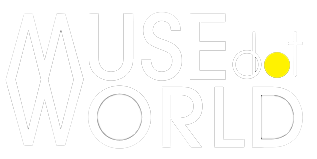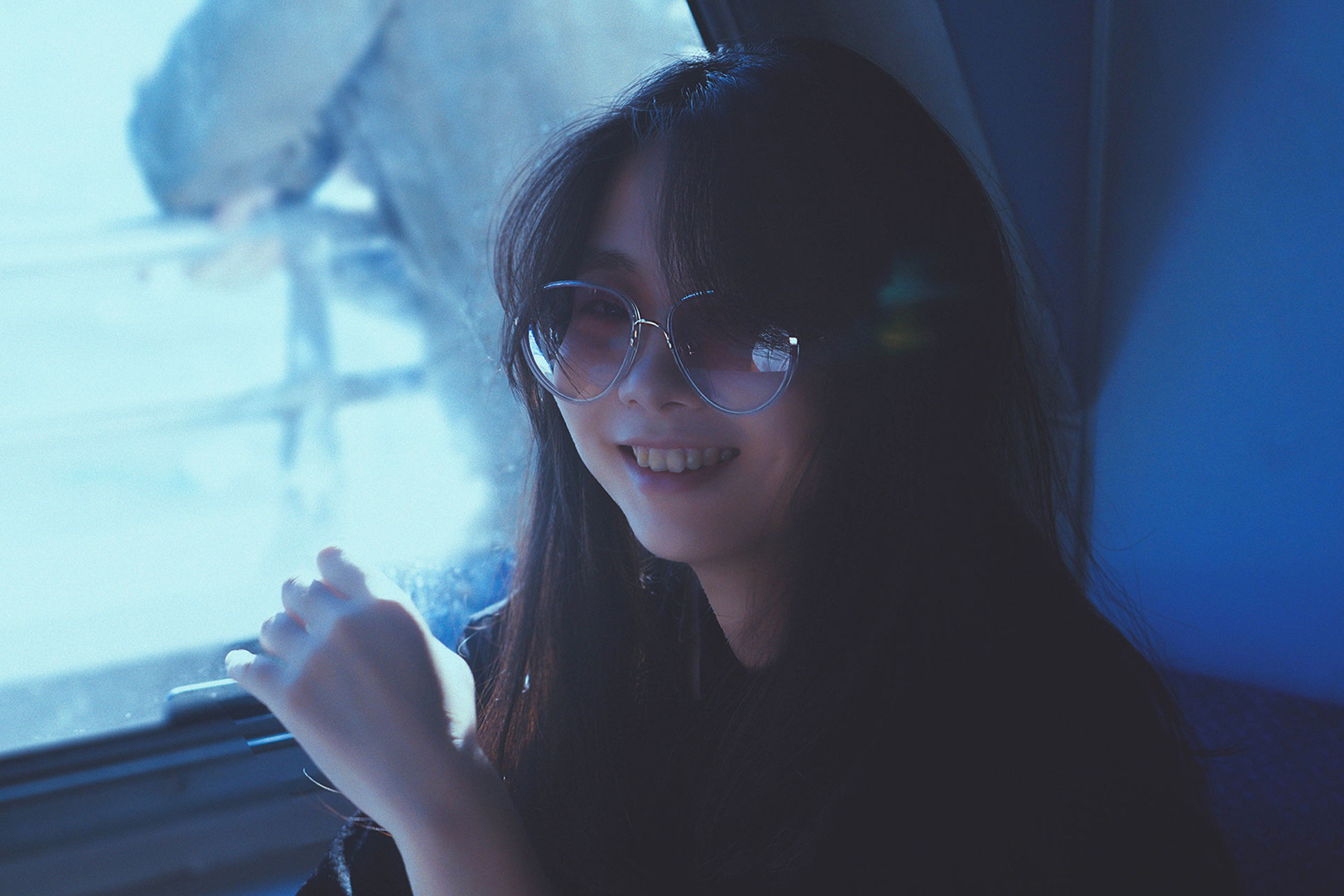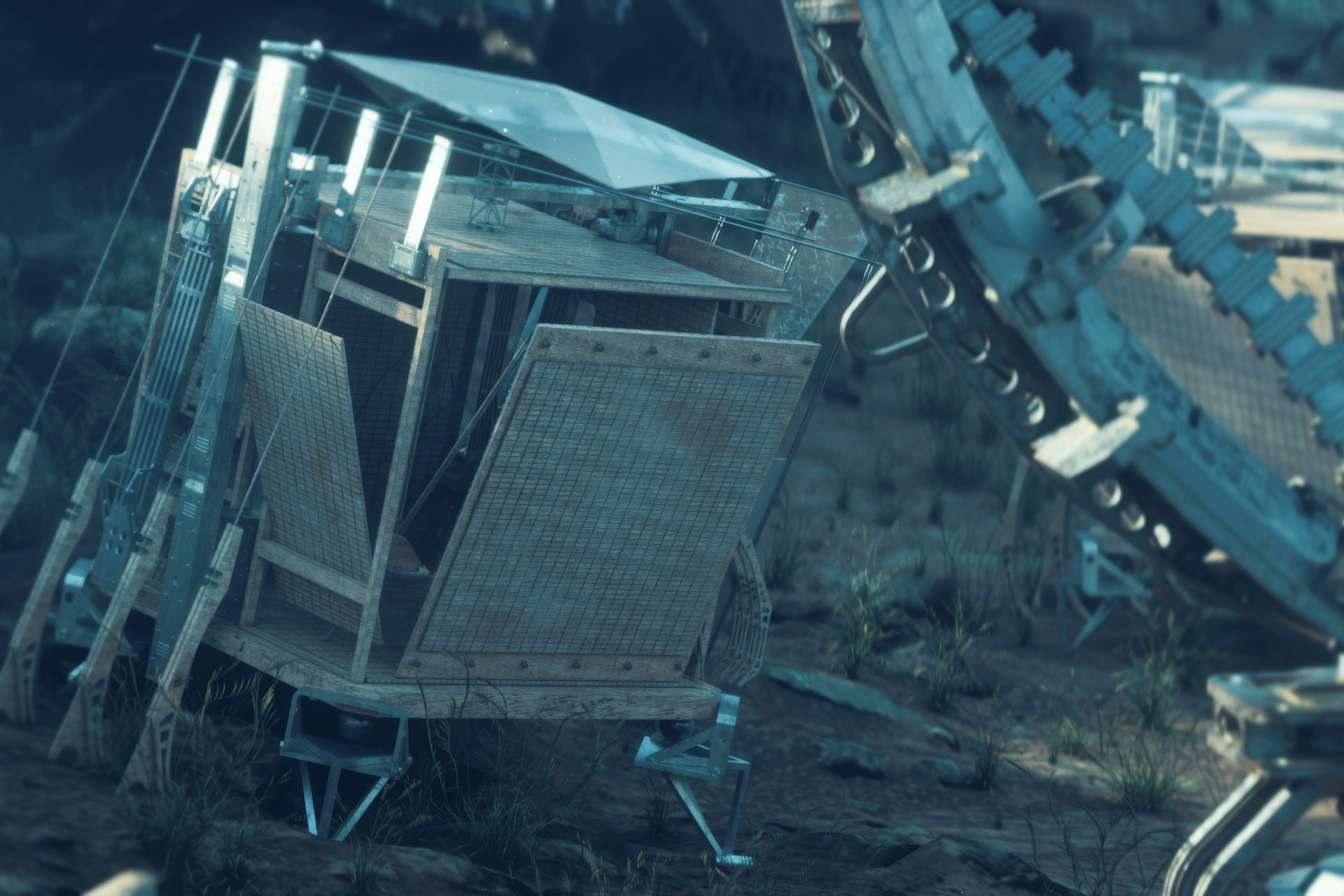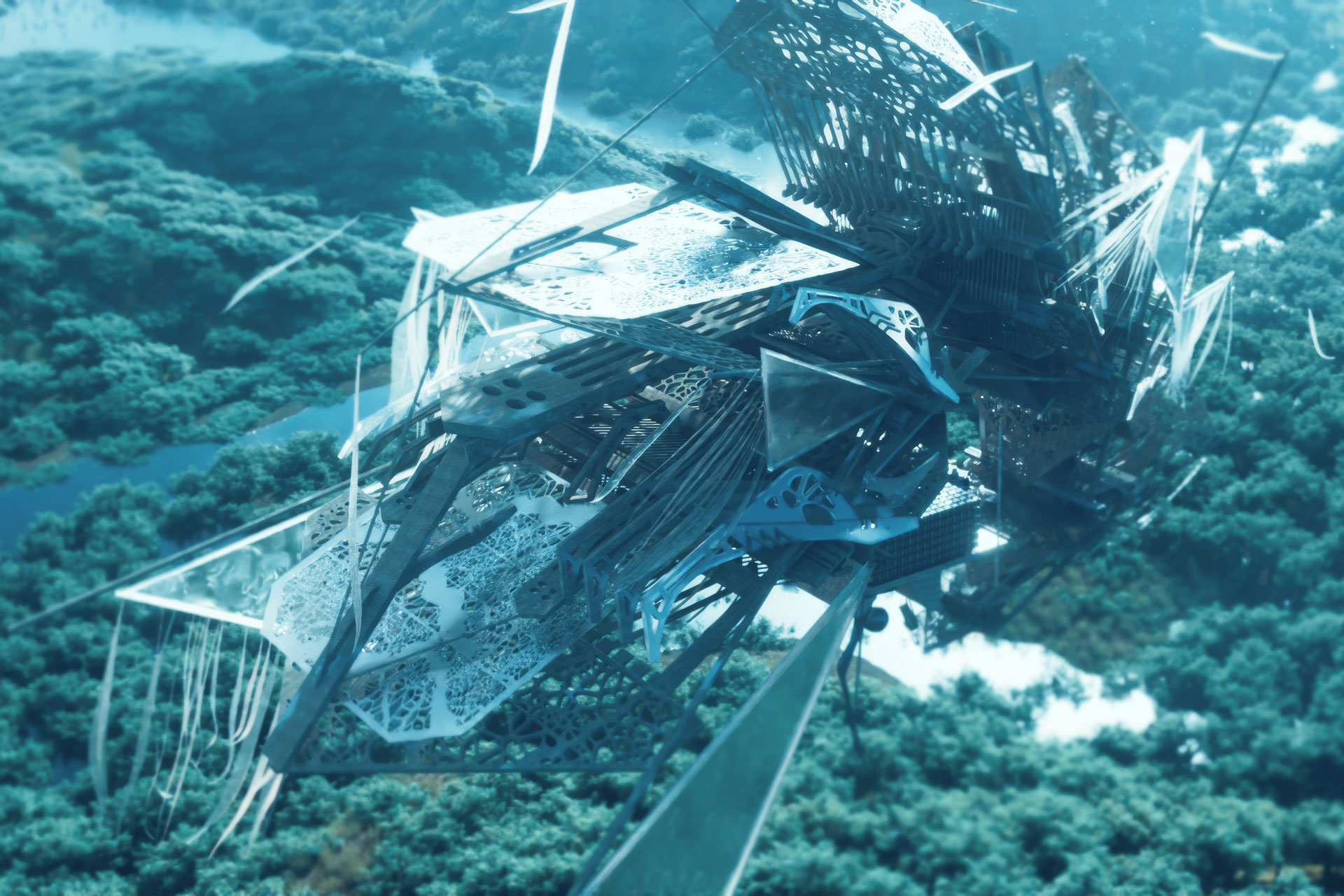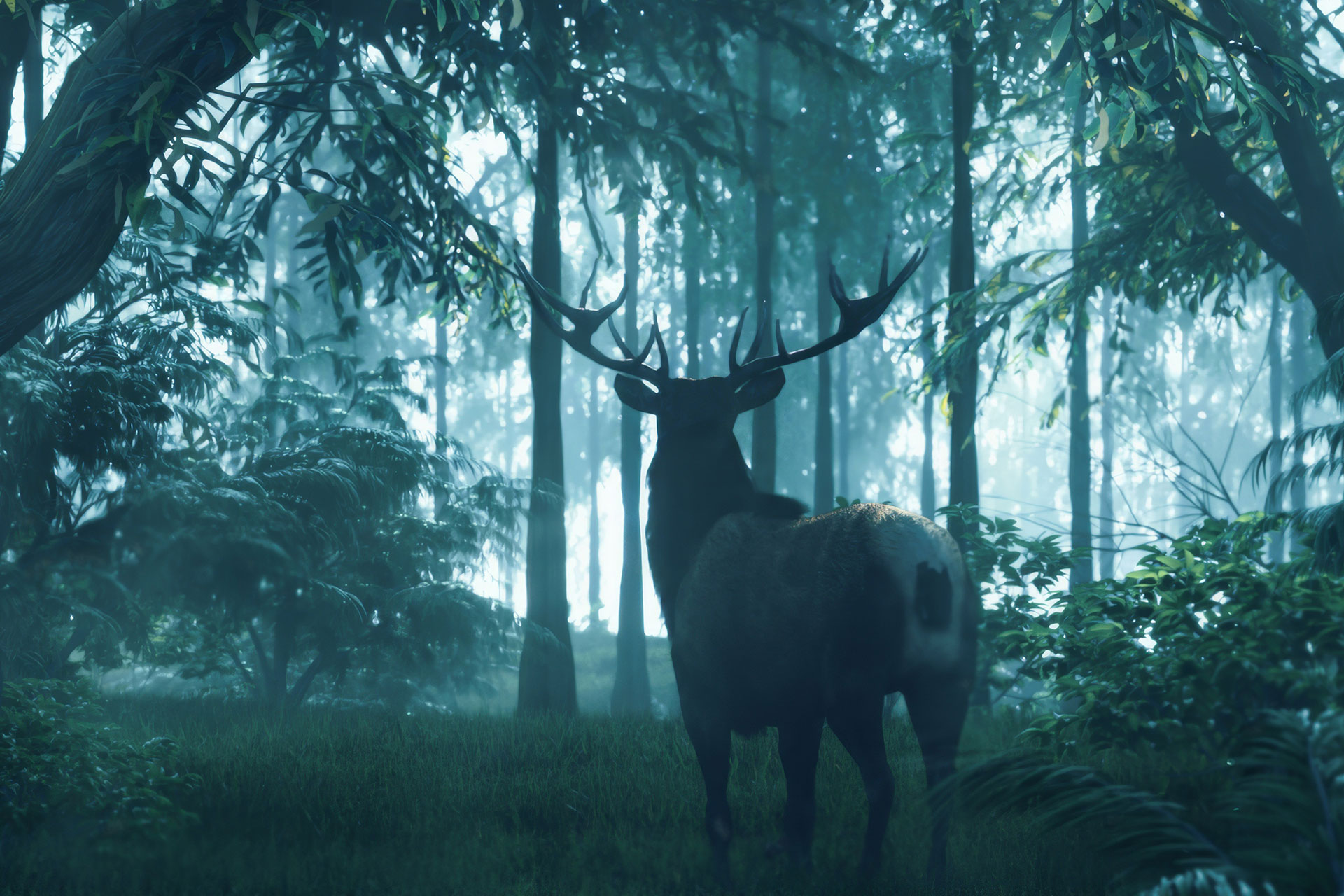An Artist’s Playground: How Yetong Xin Explores 3D Possibilities

Inside the Mind of Victor Sosa, Head of Strategy and Creative at The Service Shop Marketing Agency
January 16, 2025
Leading with Action: Santhosh Kumar Ganesan Leads by Revolutionizing Customer Engagements
January 20, 2025Yetong Xin
Yetong Xin is an interdisciplinary artist specializing in dynamic graphics, 3D visual art, AI, XR technologies, and interactive media. Her work spans animation, film, gaming, and immersive exhibitions, with collaborations including Refik Anadol Studio, Harvard CAM Lab, and the Brooklyn Film Festival.
I am an interdisciplinary artist specializing in dynamic graphics, 3D visual art, AI, GC and XR technologies, projection, and interactive media. My work spans animation, film, gaming, advertising, immersive exhibitions, and architectural projections. Through digital media, I explore the intersection of the virtual and real, creating immersive experiences that challenge perceptions of identity, space, and reality.
As a collaborating artist with Refik Anadol Studio and Harvard CAM Lab, I have contributed to several large-scale immersive exhibition projects. My personal works have been exhibited internationally in cities such as New York, Melbourne, Beijing, Shanghai, and Budapest, and featured in exhibitions including the Utopia NYC Art Exhibition, METAXIS + PROMPT Festival, D ARCH, and the Brooklyn Film Festival. My work has been selected for academic conferences such as NeuralPS and Chinese CHI.
I earned my bachelor's degree from Tsinghua University and am currently pursuing graduate studies at Harvard University. I have spoken at TED×Youth and the BDA Dance Forum, sharing my insights on digital art and virtual reality. My works have gained significant attention at international exhibitions, continually pushing the boundaries of art and technology and inspiring audiences to rethink the relationship between the virtual and the real.
Since childhood, I have been passionate about art and animation, treating them as a personal interest that fueled my imagination and creativity. This passion grew with me over the years. During university, I was introduced to 3D motion graphics, and Beeple’s work had a profound impact on me. His ability to construct virtual worlds through digital media inspired me deeply, prompting me to explore 3D design and gradually turn this interest into my professional path.
As I acquired more technical skills, I began to develop my own style. Through this process, I discovered a fascination with the interplay between the virtual and the real, and how this intersection shapes individual identity and perception. This exploration has become the core of my creative practice. I use digital media, such as 3D animation, projection, and immersive visuals, to embed virtual elements into physical spaces.
For instance, architectural projections transform buildings from mere physical structures into components of a virtual experience. When virtual imagery overlays physical spaces, their inherent properties are disrupted, creating a meeting point between the virtual and the real.
Through my work, I aim to guide viewers to experience a shift in identity between these two realms, breaking free from the constraints of everyday reality. By constantly transitioning between spaces and identities, I hope to encourage audiences to re-examine their relationship with themselves and others through virtual interactions.
For me, creation is both an avenue for exploration and a medium for expression. It not only embodies my thoughts but also offers viewers an opportunity to rethink their understanding of the world. This is the driving force behind why I chose to pursue a creative path.
I am an experienced 3D artist with a diverse background in creative design across animation, immersive exhibitions, game design, and film production.
At Refik Anadol Studio, I worked as a 3D Artist, contributing to art projects that combine artificial intelligence and immersive exhibitions. My responsibilities included 3D design and creating large-scale immersive displays, delivering captivating experiences for audiences.
At Harvard FAS CAMLab, I have been a 3D Artist and Research Assistant, focusing on integrating digital media art with Asian culture to craft immersive cultural experiences. I have successfully collaborated with national museums in China to host multiple exhibitions.
In addition, I have worked with renowned companies and organizations, including NetEase Games, where I served as a Game UI and Motion Designer, contributing to the design of popular gaming projects; Bilibili, where I worked as a freelance 3D artist on dynamic video content; and Modern Sky Entertainment, where I explored the fusion of music and visuals through motion design.
My career also includes collaborations with organizations such as Blue Focus, JH Films, and other prominent studios, alongside freelance 3D art and motion design projects. These experiences have helped me develop a wide range of technical skills and a deep understanding of cross-cultural collaboration, enriching my artistic approach with diverse perspectives.
Through these practices, I continue to explore the interaction between the virtual and the real, aiming to redefine the relationship between space and identity through digital art.
For me, creativity is a tool to break physical limitations and redefine space and identity. In my work, I focus deeply on the relationship between the virtual and the real: how reality serves as a medium for the virtual, and how the virtual, in turn, shapes reality. As a result, my work often involves a process of transforming something from reality into the virtual.
For example, I frequently use motion capture technology to record the dance movements of real-world performers, transforming these data into digital dancers and virtual imagery. These virtual images are then reintegrated into the physical world through specific mediums, blurring the boundaries between the virtual and the real.
This process is not only an exploration of technology but also a profound examination of identity, space, and perception. Through these works, I aim to encourage viewers to rethink their relationship with themselves and their surroundings as they transition between the virtual and the real.
Creativity enables me to break free from the constraints of traditional art forms and explore new modes of artistic expression. Using projection technology, I transform architecture into components of virtual experiences. Through immersive visuals, I guide audiences from physical spaces into virtual worlds, challenging their preconceived notions of reality.
This experimental approach not only represents a breakthrough in artistic expression but also offers audiences an opportunity to re-examine themselves and the world around them. Creativity allows me to continuously push the boundaries of art, discovering new possibilities hidden within the intersection of the virtual and the real.
For me, a creative idea means a completely new "perspective," a unique way of looking at a problem. When we live in a collective environment, our perspectives are often unconsciously influenced and homogenized. As a creator, it’s essential to revisit familiar issues from a different angle, propose new concepts, and create works that inspire reflection. This shift in perspective lies at the heart of creativity.
I have always been committed to exploring this idea. For instance, I once created a set of architectural projection works for an art museum in China. This project involved designing two distinct experiences for the exterior and interior of the building, while maintaining the same content—digital dancers performing. When viewers stood outside the building, they observed the dancers from a detached, spectator’s perspective.
However, upon entering the building, they were surrounded by the projections of the dancers, as if stepping onto the stage and becoming part of the performance. This shift from observing to participating, from outside to inside, was achieved through a change in "perspective," highlighting the fascinating interplay between the virtual and the real.
I believe this transformation of identity through perspective is one of the most captivating aspects of creative design. It not only provides audiences with a novel experience but also encourages them to deeply reflect on their relationship with themselves and the world around them. This pursuit of new perspectives is a constant goal in my creative journey.
In my creative process, I dedicate a significant amount of time to research and concept refinement during the early stages, often spanning several months.
When I identify a question or want to express an idea, I engage in deep self-reflection, asking: Why does this matter to me? What does it signify? How do others perceive this issue? What are its root causes? This introspective process forms the foundation of my creation. I conduct extensive research, gather references, and discuss my ideas with friends to seek their opinions. Throughout this phase, I strive to remain objective to ensure I collect diverse perspectives and comprehensive information.
As an artist with a strong focus on visual effects, I then translate my ideas into visual form by constructing the desired imagery in my mind. Proficient in C4D and other 3D software, I use these tools to quickly build the envisioned scene, experimenting with different compositions and making adjustments throughout the process.
This stage is crucial for defining the visual style and ensuring the concept takes a tangible form. Once the concept and visual direction are established, I follow a structured and professional workflow to complete the design, bringing the project to life.
My favorite part of the creative process is the stage of exploring style. During this phase, I am flooded with ideas and quickly bring them to life in simple forms to identify the exact feeling I want to achieve.
This stage is the most creative for me because it allows me to combine many elements I love and experiment with unfamiliar styles and techniques. Through this exploration, I discover new visual possibilities and push the boundaries of my artistic expression.
My creative style emphasizes striking visual aesthetics, a preference deeply influenced by my background in graphic design. I have a strong appreciation for the beauty of precise composition and the balanced proportions created by intricate light and shadow, and I have carried this pursuit into my 3D design work.
In my 3D creations, you’ll often find a dynamic interplay of abstract elements such as flowing lines, mechanical structures, and intricate light effects—an approach closely tied to my core artistic pursuit: atmosphere.
The integration of the virtual into the real generates a unique sense of atmosphere, one that transports viewers into a dreamlike state. I enjoy blurring the boundaries between reality and the virtual in my work, enabling audiences to shift roles and perspectives as they navigate these two realms.
This exploration of identity, space, and perception seeks to not only captivate visually but also provoke a deeper reflection on the relationship between individuals and their surroundings.
It has had a profound impact. First, being born and raised in China, I have been deeply influenced by Chinese culture, especially in the arts. I have a strong appreciation for traditional Chinese dance and landscape painting, which embody an abstract and expressive aesthetic that emphasizes an elevated pursuit of beauty.
Additionally, my work with Harvard CAMLab, an organization focused on Asian cultural and artistic creation, has exposed me to a wealth of knowledge in Asian art and architectural history. A distinctive characteristic of Asian culture, in contrast to the long-standing "realism" in Western art, is its emphasis on a more abstract and "expressive" approach.
This artistic style creates a sense of being both rooted in reality and simultaneously transcending it—a state that exists somewhere between the virtual and the real, the objective and the subjective.
This perspective has had a significant influence on my creative philosophy and is one of the key reasons I am so dedicated to exploring the interplay between the virtual and the real in my work.
I am honored to receive the MUSE Creative Awards. This award is undoubtedly a recognition of our work.
For this project, I had the pleasure of collaborating with several talented artists, including my friend Muwen Li, a designer with an architectural background. She is a master’s student in Media Design at Harvard's Graduate School of Design (GSD) and has a passion for creating narrative-driven animation. Another collaborator, Jonine Liu, is a sound designer from Berklee with an innate sensitivity to sound. They’re both thrilled to have received this award as well!
This recognition represents a successful collaboration for us and will serve as motivation for our future projects together.
The award-winning piece NOMAD is a 3D short film that explores themes of environmentalism, the Amazon rainforest, and the cities of the future. Under this broad theme, we pose a critical question: In modern society, people often exploit natural resources solely for their benefit, without considering whether nature can sustain these demands.
This unsustainable approach has led to an annual decrease in the land area of the Amazon rainforest—a precious natural resource—and has contributed to the environmental crises we face today.
In response, we envision a future in which people are "in tune with the environment," imagining a scenario where tribal communities engage in a balanced and sustainable dialogue between the supply and demand of natural resources.
They would construct a city capable of moving freely, continuously evaluating a region's resources and environmental data to decide if it can continue to support human life. When a location can no longer sustain life, the city would gather its citizens and migrate to a new site.
We hope that this wandering city, forever traversing forests and winds, offers audiences a dual aesthetic experience—both spiritual and visual—and inspires reflection on freedom, environmental responsibility, and humanity’s coexistence with nature.
This project combines a compelling narrative with refined visuals while addressing critical environmental issues, aligning perfectly with the mission of the MUSE Creative Awards: to spotlight social topics and celebrate the beauty of creation.
The challenge was how to create a worldview that respects nature in the context of a high tech future. Many futuristic films, such as those with cyberpunk aesthetics, often depict highly mechanized cities, which conflict with the message of nature conservation the project aimed to convey.
To address this issue, multiple discussions were held, ultimately leading to the adoption of a biomimetic approach, designing a city that embodies advanced technology while coexisting harmoniously with nature.
Winning this award has had a significant impact on my practice and career development. First and foremost, it serves as a strong affirmation of my creative abilities and artistic vision, giving me greater confidence in my chosen direction. This recognition is not only an encouragement but also validation of my past efforts, motivating me to take bolder steps in exploring new forms and themes in future creations.
From a professional perspective, this award has elevated my credibility within the industry, opening up more opportunities to collaborate with outstanding artists, organizations, and interdisciplinary teams. The award-winning project NOMAD focuses on themes of environmentalism and future cities, marking a solid step forward in my pursuit of combining social issues with artistic expression.
This approach not only adds depth and impact to my work but also attracts partners and resources who share a commitment to addressing social issues.
Additionally, the recognition has provided my work with more visibility and platforms for public attention, allowing my creations to reach a broader audience and professional community. This has been instrumental in promoting my creative philosophy, discovering more possibilities for interdisciplinary collaboration, and even expanding my international influence.
Winning this award is not just an honor but a milestone in my artistic career. It pushes me to reflect on how artistic practices can drive awareness of important social issues while inspiring me to continue exploring the interplay between the virtual and the real, as well as the possibilities of coexistence between humanity and the environment.
What I love most about our industry is its boundless creative potential. It’s a space where art, technology, and storytelling converge, opening up infinite possibilities for innovation. From crafting immersive experiences to leveraging cutting-edge technologies like AI and virtual reality, there is always an opportunity to push boundaries and explore uncharted territories. This constant evolution keeps the work exciting and inspires me to continually refine my craft.
Another aspect I deeply value is the emphasis on cross-disciplinary collaboration. Our industry thrives on bringing together individuals from diverse fields, such as designers, technologists, engineers, and musicians.
This multidisciplinary environment creates a dynamic exchange of ideas, leading to richer and more complex projects. The opportunity to collaborate with talented professionals from varied backgrounds not only broadens perspectives but also enhances the creative process, making it incredibly rewarding.
Perhaps what resonates with me the most is the profound impact and engagement that art and design can have on society. Our work has the power to communicate complex ideas, evoke emotions, and inspire change.
Whether addressing environmental issues, representing cultural narratives, or challenging conventional viewpoints, the ability to connect with audiences on a deep, meaningful level is immensely fulfilling. This combination of creativity, collaboration, and societal impact is what makes this industry so unique and inspiring to me.
China has many unique aspects in the creative industry, stemming from its rich cultural heritage and benefiting from the rapid development of technology and economy in recent years.
First, China’s abundant cultural heritage provides an endless source of inspiration for the creative industry. From traditional calligraphy and landscape painting to opera and architecture, Chinese art embodies a distinctive aesthetic and philosophical depth.
This emphasis on abstraction and artistic conception aligns well with the innovation demands of the modern creative industry. China excels at integrating traditional culture with contemporary design, merging ancient art forms with digital technologies to create works with modern relevance.
Second, China's rapid advancements in digital technology provide a strong foundation for its creative industry. From artificial intelligence to virtual reality, technological innovations in China continue to push the boundaries of creative expression.
For example, fields like film visual effects, game design, architectural visualization, and interactive installations have showcased China’s competitive edge on a global scale. This deep integration of technology and art gives China’s creative industry a unique modern character.
Moreover, the size and diversity of China’s market are major advantages. With a vast and varied audience, China offers immense opportunities for experimentation in creative works. Whether it’s art rooted in traditional culture or digital content targeting younger generations, there is always a receptive audience in China. This diversity provides creators with unlimited possibilities and drives the industry toward greater inclusivity and innovation.
In summary, China’s unique strength in the creative industry lies in its ability to blend traditional culture with modern technology, securing a significant position in the global creative field. The expansive market and robust technological support further fuel the continued growth and vitality of China’s creative sector.
In the next 5 to 10 years, technological advancements will drive a profound transformation in the creative industry. With the rapid development of artificial intelligence, virtual reality (VR), augmented reality (AR), blockchain, and big data, the boundaries between technology and art will blur even further.
AI-powered creative tools will make it easier for more people to engage in the creative process, lowering barriers while simultaneously raising expectations for originality and innovation. Immersive experiences will play a pivotal role, with virtual exhibitions, digital fashion shows, and metaverse-related content becoming increasingly significant. This integration of cutting-edge technology with artistic expression will open up unprecedented possibilities for the industry.
At the same time, globalization will continue to shape the creative industry, creating a greater need to balance global outreach with local cultural expression. Creative works will need to present cultural uniqueness while appealing to international audiences.
This dual focus will be especially impactful in areas such as film, gaming, and art exhibitions, where cross-cultural collaborations and shared aesthetic values will gain prominence. As a result, the creative industry will act as a bridge, connecting diverse cultural narratives and fostering mutual understanding on a global scale.
In parallel, the industry will see a growing emphasis on eco-friendly and sustainable practices. As concerns about environmental issues intensify, creative professionals will increasingly incorporate sustainability into their work. Whether through adopting eco-conscious design principles to minimize waste or using art to engage the public in conversations about environmental challenges, the creative industry will play a vital role in addressing global issues.
Moreover, the rise of virtual content will reduce dependence on physical resources and spaces, offering innovative solutions for sustainability while broadening the scope of creative possibilities.
If I were a student just entering the creative industry or an aspiring MUSE Creative Awards entrant, I would give myself the following advice to better navigate this field and fully showcase my potential:
First, I would deeply explore the core of my creativity. Before starting any project, I would ask myself: What do I want to express through this work? What does this theme mean to me? The most impactful creations often stem from the creator’s deep thoughts and emotions. Therefore, I would dedicate time to clarifying my creative direction, ensuring that each piece carries my unique voice and profound meaning.
Next, I would actively embrace interdisciplinary collaboration. The modern creative industry thrives on cross-disciplinary integration, and I wouldn’t limit myself to a single field. Instead, I would seek opportunities to collaborate with individuals from various backgrounds, such as artists, designers, engineers, and even scientists. These collaborations would not only help me learn new skills and perspectives but also enrich my work with greater depth and complexity.
At the same time, I would strive to balance technology and art. In today’s world, mastering digital tools, such as 3D design software or interactive development platforms, is essential for efficiently bringing ideas to life. However, I would always remember that art is the soul of any creation, while technology is merely a tool. The combination of the two is what truly makes a piece stand out.
I would also focus on addressing social issues to imbue my work with deeper meaning. The MUSE Creative Awards highly value projects with societal impact. For this reason, I would aim to integrate my creative ideas with themes like environmental protection, cultural preservation, or technology ethics. By doing so, my work could not only resonate emotionally with the audience but also inspire meaningful reflections on important topics.
Lastly, I would remind myself not to fear failure or criticism. Creativity is a process of constant experimentation and growth, and every failure is a crucial step toward success. I would bravely showcase my work, embrace feedback, and learn from it to further refine my skills and strengthen my creative voice.
Most importantly, I would maintain my passion for art and my curiosity for the unknown. The creative industry is full of challenges and opportunities, and as long as I persist, keep exploring, and stay true to my vision, I believe I can create something truly remarkable.
For me, sources of inspiration are an indispensable part of the creative process. Art exhibitions and museums are always excellent places for me to spark new ideas. For instance, renowned institutions like MoMA and Tate Modern provide opportunities to appreciate both classical and contemporary artworks, allowing me to gain a deeper understanding of different mediums and forms of expression while drawing fresh ideas for my creations.
At the same time, I also rely heavily on digital platforms to gather inspiration. Platforms like Behance and Dribbble allow me to quickly explore outstanding works across fields such as graphic design, illustration, and animation. They help me stay updated on industry trends and observe how top creators express their ideas. Pinterest, on the other hand, serves as a great tool for organizing and collecting inspiration.
I enjoy creating my own inspiration boards there, categorizing scattered ideas and visual elements for easy reference in future projects. These resources not only help me keep my creativity fresh but also broaden my perspective, enabling me to infuse my work with more multidimensional thinking.
I have never told anyone that creation, while it may seem beautiful and joyful on the surface, is actually a profoundly painful process. To me, most of the creative journey is spent in arduous self-questioning and endless revisions of design concepts.
During this process, I often find myself trapped in a vortex of self-doubt, repeatedly overturning ideas I once thought were good, continually questioning and reevaluating until truly outstanding designs emerge in my work. While this pain is unavoidable, it is also the most authentic and essential part of creation, as it pushes me to constantly surpass myself and strive for higher standards.
I would love to share how Beeple has inspired me. When I first came across his work online, I was amazed by his creativity. Later, I learned that he had been creating and posting a new piece of art every day for over a decade. This dedication deeply encouraged me—it showed me that it’s possible to maintain an enduring passion for creation while constantly refining one’s skills.
Inspired by this, I decided to begin my own creative journey in 3D art. Beeple’s work revealed to me the boundless possibilities of imagination and an infinite love for expressing that imagination. I started experimenting with 3D software, creating simple pieces daily to challenge myself and explore new ideas.
Over time, this practice not only helped me improve technically but also allowed me to discover my unique style and voice in the world of digital art. Beeple’s influence became the foundation of my commitment to continuous learning and creating.
I believe there is no fixed formula for "success." Instead, it stems from a persistent passion for what you love and a continuous drive to challenge yourself. In my creative journey, two key principles have kept me moving forward: a genuine love for creation and a commitment to personal growth.
First, my passion for creation has been the fundamental driving force that has carried me through countless challenges. The process of creating is not always beautiful; more often than not, it is filled with setbacks and self-doubt.
But it is this love for what I do that allows me to push past my limits, constantly try new approaches, and strive for higher levels of expression. Whether it's mastering new techniques or exploring different styles, this passion gives me a reason to persevere with every piece I create.
Second, my commitment to growth keeps me open-minded and eager to learn and experiment. I believe that no one is born successful; every step forward requires effort and refinement. Especially in the creative industry, where inspiration and technology are ever-changing, staying motivated to learn and maintaining curiosity about the unknown are crucial.
As parting advice, I would say: never be afraid of failure. Failure is not something to fear; it is an inevitable part of the creative process. Every failure is, in fact, an essential step toward success. It reveals areas for improvement and provides valuable lessons for future growth.
At the same time, always remember why you started—your passion is the most enduring source of motivation. If you stay true to your love for art and creativity while continuing to put in the effort, I believe you will undoubtedly create something extraordinary and uniquely your own.
Throughout my career, I have been dedicated to fostering the integration of art and technology, exploring the intricate interplay between the virtual and the real. I focus not only on technological innovation but also on emphasizing the uniqueness and forward-thinking nature of my creations.
At Harvard CAMLab, I have worked to combine traditional Asian culture with digital technology, designing a series of immersive cultural experiences. These projects, utilizing 3D projection and interactive technologies, are not only visually captivating but also creatively reinterpret the value of cultural heritage in contemporary society.
This fusion of tradition and modernity has received widespread recognition, demonstrating how digital art can provide new possibilities for cultural preservation.
My work also reflects groundbreaking contributions to the field, such as the 3D short film NOMAD. Centered on environmental themes, this project uses 3D animation and dynamic architectural design to propose a model for sustainable future cities. NOMAD has been honored with the MUSE Creative Award and has become a notable artistic exploration of environmental and urbanization issues. It highlights how art, through visual storytelling, can engage with societal challenges and provoke profound reflection.
Additionally, I am committed to exploring new forms of artistic expression. For instance, I have used motion capture technology to transform the movements of real dancers into digital virtual figures, projecting these onto architectural spaces to blur the boundaries between the virtual and the real. This approach expands the expressive potential of both dance and architecture, offering entirely new possibilities for artistic creation.
Through my work, I aim to inspire others to reflect on the relationship between technology and art, as well as between the virtual and the real, while paving the way for new possibilities in the creative industry.
Yetong Xin
Yetong Xin is an interdisciplinary artist specializing in dynamic graphics, 3D visual art, AI, XR technologies, and interactive media. Her work spans animation, film, gaming, and immersive exhibitions, with collaborations including Refik Anadol Studio, Harvard CAM Lab, and the Brooklyn Film Festival.
Explore the journey of Victor Sosa, a Gold Winner in the 2024 MUSE Creative Awards. He is a bilingual marketing expert and serves as the Head of Strategy and Creative at The Service Shop Marketing Agency, specializing in brand positioning and consumer segmentation. He has worked with prominent organizations such as The Coca-Cola Company, Ahold-Delhaize USA, British-American Tobacco, and others.
